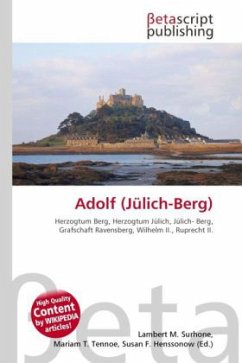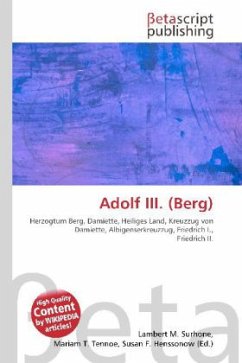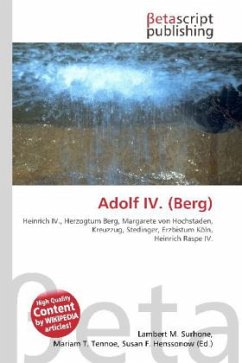Please note that the content of this book primarily consists of articles available from Wikipedia or other free sources online. Jülich-Cleves-Berg was the name of two former territories across the modern German state of North Rhine-Westphalia and the modern Dutch province of Gelderland. From 1521 to 1666, the territory was a combination of states in personal union, all reichsfrei territories of the Holy Roman Empire. The name was resurrected after the Congress of Vienna for a short-lived province of the Kingdom of Prussia between 1815 and 1822. The United Duchies of Jülich-Cleves-Berg was a combination of states of the Holy Roman Empire. The duchies of Jülich and Berg united in 1423. Nearly a century later, in 1521, these two duchies, along with the county of Ravensberg, fell extinct, with only the last duke''s daughter Maria von Geldern left to inherit; under Salic law, women could only hold property through a husband or guardian, so the territories passed to her husband and distant relative John III, Duke of Cleves and Mark as a result of their strategic marriage in 1509.
Bitte wählen Sie Ihr Anliegen aus.
Rechnungen
Retourenschein anfordern
Bestellstatus
Storno








